
|
Electric Boulevard Most of the Lake Shore's route through Avon Lake can be followed simply by driving Electric Blvd., so named because it was paved directly over the former right-of-way. After the railway was dismantled in 1938-39 the right-of-way remained abandoned for many years. Over time, sections were paved to make new streets which eventually formed the long continuous Electric Blvd. which today crosses nearly all of Avon Lake east to west. Cross streets such as Lear Road, Jaycox Road, Fay Ave., Avon Center Road (now Avon-Belden), Moore Road, and many others were local stops for the interurbans, and their names still correspond to the old lists. An electrical substation was built at the southwest corner of Jaycox Road in 1925, necessitated by the change to 60 cycle AC power. It no longer exists and unfortunately no photos of this substation nor many of the local stops have been found. Beach Park Station At the west end of Electric Blvd. is the area long known as Beach Park. In 1897 the Lorain & Cleveland line built an elaborate 65 foot x 200 foot brick building which served as car barn, passenger and freight station, and office space. It was an impressive structure for a small interurban, but the Lorain & Cleveland had big plans for the future. The Beach Park station served the LSE well for nearly forty years, and was far more substantial than the small storefronts or cramped substation ticket offices found elsewhere on the line. Surrounding the station was a small rail yard of several sidings and a wye track as well as various out-buildings. A 50,000 gallon water tower (seen in many Beach Park photos) was owned by the LSE and used to supplement the city water supply and act as a back-up for the station's fire sprinklers. A brick "oil house" at the east end of the station was used for storing oil, grease and other flammable materials. These structures were most likely built in response to a fire which broke out in the station on April 15, 1918. It is believed that a short circuit in electrical wires started the fire which badly damaged the interior of the station and destroyed six interurbans parked inside. The station had no interior sprinklers at that time. Another prominent out-building was the sand drying house. Sand has long been used by locomotives, streetcars, and interurbans to aid in traction of the smooth steel wheels on smooth rails. The LSE "mined" sand from the beaches on its property, most notably at Sages Grove near Huron. The sand was then cleaned and thoroughly dried before being used on the cars. Between 1930 and 1932 Beach Park was the east terminal for loading and unloading the experimental Bonner Railwagon system, a forerunner of the piggy-back or trailer-on-car system used by railroads today. Beach Park was chosen as the Railwagon terminal for the Cleveland end of the LSE (rather than Eagle Ave. or Rocky River) because it was located entirely on LSE property and avoided the charges incurred by hauling them over Cleveland Electric trackage. A ramp for the Railwagons was located on a freight siding just north of the water tower (see map below.) Plans were made to greatly expand use of the Railwagon system but the project was killed in 1932 when the Ohio Public Utilities Commission ruled that the LSE needed a motor carriers certificate to operate the trailers on the roads. When the Lake Shore ended operations in May 1938, the Beach Park station was emptied of all furnishings and equipment which were loaded into box trailers and hauled to Sandusky for storage and disposal. The windows were boarded up and the station left unused while the rest of the line was dismantled. The building was sold in 1940 and converted to a motel and restaraunt known as the Saddle Inn, a name still used by many locals. The Avon Lake Theater also operated in part of the building from 1949 until the early 2000's. Further renovations and additions have taken place and the building is now home to several different businesses. Today it is owned by Tom Patton, who has since become an LSE enthusiast and author. |

major station from beginning to end. (Thomas Patton) |

of-way between 1897 and 1906. (John A. Rehor collection) |
|
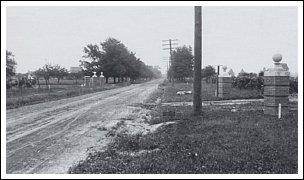
the right, North Point Drive on left. (Thomas Patton) |
|
|
Lorain and Cleveland in 1906. (Thomas Patton) |
|
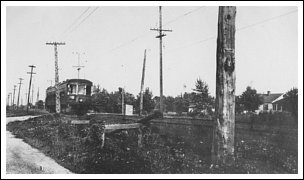
(Dennis Lamont) |
|
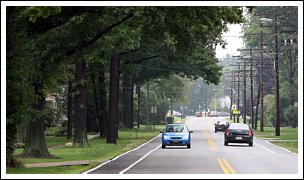
right-of-way through Avon Lake. (Scott Shaw photo) |
|

(Thomas Patton) |

(Gilbert Hodges photo) |
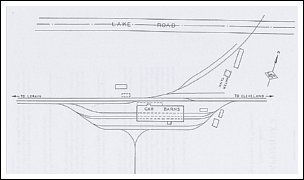
(Tom Heinrich) |

box trailers and line car wait on sidings. (Thomas Patton) |

Moore Road is just visible in the background. (Thomas Patton) |

west from Beach Park in 1934. (Ralph A. Perkin photo) |

motors in 1930. (Thomas Patton) |

trailer in 1937. (Harry Christiansen) |

Railwagon system used for a short time by the LSE. (Harry Christiansen) |
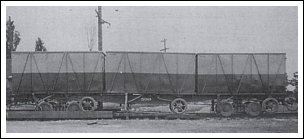
(Harry Christiansen) |

Park in 1938. (Jim Spangler) |
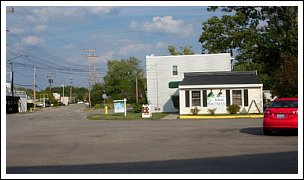
(Drew Penfield photo) |

(Drew Penfield photo) |

at right is the sand drying house. (Dennis Lamont) |

Date unknown. (Thomas Patton) |
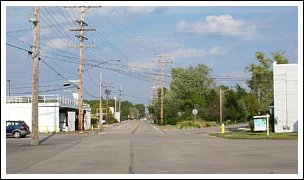
Electric Blvd. (Drew Penfield photo) |

(Karel Liebenauer photo) |
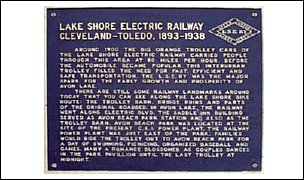
(Dennis Lamont) |
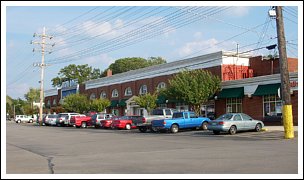
(Drew Penfield photo) |

Electric Blvd. west from the station. (Drew Penfield photo) |

Creek just west of the station in 1935. (Drew Penfield) |
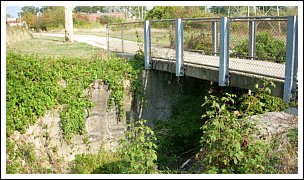
pedestrian bridge. (Drew Penfield photo) |
|
|
|